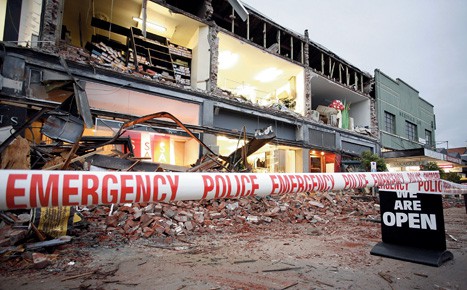Developed by a group at Heriot-Watt University in Edinburgh, the system makes use of stainless steel ‘sacrificial devices’ which are placed strategically in the structure so that they are the only damaged components during earthquake loading.
Current European ‘earthquake-proof’ buildings were designed to prevent collapse in the event of a strong earthquake. However, they do not prevent extensive damage that is difficult to repair, or the permanent deformation of a building after it has stopped shaking (also known as residual drift). Typically, If buildings experience one or both of these factors, the cost of repairs can become prohibitive, and demolition may be the only viable option.

Dr George Vasdravellis, assistant professor in structural engineering at Heriot-Watt University in Edinburgh, has used computer simulations to prove that his new system minimises the damage caused to buildings up to 10 storeys high in an area of high seismicity, with one in 475-year seismic events.
“The inherent properties of stainless steel results in the significant reduction of the residual drifts after a strong earthquake,” said Vasdravellis. “Through experimental testing and numerical simulations, we found that our system had negligible residual drifts under loading corresponding to the ‘design earthquake’, compared to conventional building designs, which experienced drifts that were four to five times larger.”
Vasdravellis said the that after a strong seismic event the device could simply be replaced, dispensing with the need to demolish the building. The technology could even be retrofitted to existing buildings he added: “In Greece and Italy, we’ve watched new areas become seismic, where previously there had been little activity. We must also consider, unfortunately, the impact of explosions or other attacks on buildings that could impose extreme loading conditions”
He and his team are now working with £140,000 of European Commission funding to take the technology to the next stage and adapt it for taller buildings.




Red Bull makes hydrogen fuel cell play with AVL
Surely EVs are the best solution for motor sports and for weight / performance dispense with the battery altogether by introducing paired conductors...